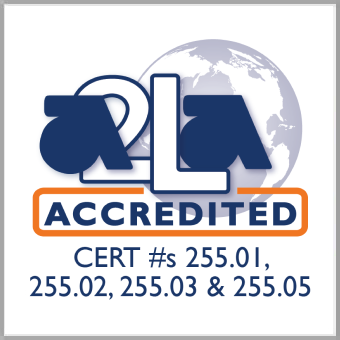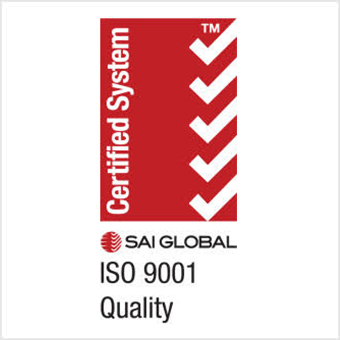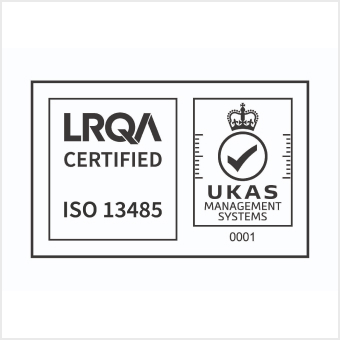Accelerated Aging of Rubber
Part 1: Introduction to Accelerated Aging of Rubber
- Overview of Rubber and its Types
- Understanding Rubber Materials: Vulcanized vs. Thermoplastic
- Properties of Natural and Synthetic Rubbers
- Chemical structure of rubber
- The role of additives (fillers, plasticizers, accelerators)
- Crosslinking and vulcanization
- Common Rubber Materials: EPDM, Nitrile, Silicone, Neoprene, Fluorocarbon, and others
- Applications of Rubber in Various Industries
- Importance of Accelerated Aging Testing
- Predicting the long-term performance of rubber
- Simulating real-world conditions in a shorter time frame
- Ensuring reliability and durability in products exposed to extreme conditions (automotive, aerospace, industrial)
- Cost-effectiveness and speed of accelerated testing compared to real-time aging
- Principles of Accelerated Aging
- The concept of accelerated aging and its necessity in rubber testing
- How accelerated aging mimics real-world conditions (temperature, humidity, UV exposure, ozone, etc.)
- The relation between aging speed and test parameters (temperature, pressure, atmosphere)
Part 2: Mechanisms of Rubber Aging
- Chemical and Physical Aging Mechanisms
- Chemical Degradation
- Oxidation, ozone degradation, and chemical breakdown
- The role of antioxidants in slowing down oxidation
- The influence of heat and oxygen on rubber materials
- Thermal Aging
- Effect of prolonged heat exposure on rubber’s mechanical properties
- Breakdown of crosslinks and polymer chains
- Physical Aging
- Changes in hardness, elasticity, and flexibility
- Loss of tensile strength and elongation at break
- Impact of Crosslinking on Aging Resistance
- The importance of crosslinking in rubber durability
- How vulcanization affects aging resistance
- The role of crosslink density in determining heat and environmental stability
- Factors Accelerating Aging in Rubber
- The role of temperature, UV radiation, moisture, and ozone in accelerating aging
- Interaction of multiple environmental factors and their combined impact on rubber
- The impact of cyclic conditions versus constant exposure
Part 3: Testing Methods for Accelerated Aging
- Overview of Accelerated Aging Testing
- The need for accelerated aging tests in quality control and research
- Comparison between accelerated aging and real-time aging
- Importance of controlled test environments (temperature, humidity, pressure, UV light, etc.)
- Heat Aging Tests
- ASTM D573: Standard Test Method for Rubber—Deterioration by Heat and Oxygen
- Testing conditions (temperature, time, exposure to oxygen)
- Measuring changes in properties (hardness, tensile strength, elongation)
- ISO 188: Rubber—Accelerated Aging and Heat Resistance
- Overview of testing protocols and results interpretation
- Differences between real-time aging and accelerated heat aging
- Ozone Aging Tests
- ASTM D1171: Ozone Resistance of Rubber
- The role of ozone in rubber degradation
- Methods for testing ozone resistance and crack formation
- Environmental chambers for ozone exposure
- The importance of testing rubber under ozone conditions (automotive seals, gaskets)
- UV and Light Aging Tests
- ASTM G155: Standard Practice for Operating Xenon Arc Light Apparatus
- Simulating sunlight exposure to rubber samples
- Testing rubber against UV degradation, discoloration, and brittleness
- Effects of UV light on natural and synthetic rubber materials
- Case studies of UV-induced rubber failures (automotive tires, outdoor seals)
- Humidity and Moisture Aging Tests
- ISO 188: Accelerated aging under humidity and moisture conditions
- The combined effect of heat and moisture on rubber degradation
- Methods for evaluating changes in volume, hardness, and tensile properties
- Combined Aging Tests
- Simulating multi-environmental stresses (heat + UV + ozone)
- Testing protocols for combined aging conditions (e.g., for automotive and industrial components)
- Real-life case studies where combined stresses lead to rubber failure
- Dynamic Mechanical Analysis (DMA) and Rheology in Aging Studies
- Using DMA to study the viscoelastic properties of rubber during aging
- Temperature sweeps, storage modulus, and loss modulus as aging indicators
- Rheological changes in rubber and their relationship to material degradation
- Thermogravimetric Analysis (TGA)
- Measuring weight loss to assess thermal stability and degradation
- The role of TGA in understanding rubber’s resistance to thermal aging
- Correlating TGA results with changes in rubber structure and performance
Part 4: Standards and Guidelines for Accelerated Aging Tests
- International Standards for Accelerated Aging of Rubber
- ASTM Standards (D573, D1171, D2000, D412)
- ISO Standards (ISO 188, ISO 180, ISO 37)
- DIN Standards (DIN 53 521, DIN 53 509)
- SAE J2004 and other automotive-specific standards for heat aging
- How standards help in quality control and ensuring material performance
- Regulatory Compliance and Industry-Specific Requirements
- Automotive: Testing for tires, seals, gaskets, and hoses
- Aerospace: High-temperature resistance in aircraft seals, O-rings, and gaskets
- Industrial: Rubber components in machinery, pumps, and valves
- Medical and food-grade rubber: Regulations for rubber used in healthcare and food contact materials
- The role of testing in meeting legal and safety requirements
Part 5: Accelerated Aging in Rubber Applications
- Automotive Industry
- Heat and ozone resistance testing for automotive rubber components (seals, gaskets, hoses, belts)
- The impact of accelerated aging on tire performance and longevity
- Case studies: Rubber failure in automotive applications due to inadequate aging resistance
- Advances in rubber formulation to improve aging resistance in automotive applications
- Aerospace Industry
- Testing rubber seals and gaskets for high-temperature and environmental resistance in aerospace
- The role of accelerated aging in ensuring reliable performance in aircraft and spacecraft components
- Real-world examples of rubber degradation in aerospace applications
- Industrial Equipment and Machinery
- The need for rubber testing in pumps, seals, valves, and gaskets exposed to harsh conditions
- Accelerated aging in rubber used for industrial machinery operating at high temperatures and pressures
- Importance of longevity in rubber materials used for hydraulic systems, bearings, and seals
- Medical and Food-Contact Rubber Applications
- Testing for sterilization, autoclaving, and exposure to high-temperature environments in medical elastomers
- Rubber in food processing, handling, and packaging: Ensuring safety and longevity
- Regulatory compliance for medical-grade rubber materials and accelerated aging testing requirements
- Consumer Goods
- Accelerated aging for rubber products in consumer goods (e.g., footwear, sporting goods)
- Testing for durability and environmental exposure (UV, heat, ozone) in everyday rubber products
- Predicting the service life and reliability of rubber items exposed to diverse environments
Part 6: Advanced Topics in Accelerated Aging Testing
- Advances in Rubber Material Science
- New elastomeric materials with enhanced aging resistance
- Innovations in additives, crosslinking agents, and stabilizers to improve aging properties
- The role of nanotechnology and composite materials in developing advanced rubber formulations
- Data Analysis and Interpretation in Aging Tests
- Analyzing and interpreting the results of accelerated aging tests
- Statistical methods for assessing aging effects and predicting lifespan
- Modeling and simulation of aging processes to predict performance in real-world conditions
- Emerging Technologies in Aging Testing
- Use of artificial intelligence (AI) and machine learning in predicting aging behavior and material performance
- Real-time monitoring of rubber materials during aging tests using sensors and advanced equipment
- The use of non-destructive testing (NDT) to assess rubber aging without damaging samples
- Sustainability and the Future of Rubber Aging Testing
- The environmental impact of rubber aging and degradation
- Developing more sustainable rubber materials with extended service lives
- The growing emphasis on recyclability and reducing waste in the rubber industry
Part 7: Case Studies and Practical Applications
- Case Studies in Automotive and Aerospace
- In-depth case studies of rubber failures due to inadequate aging resistance in automotive and aerospace sectors
- Lessons learned from field performance data and accelerated aging tests
- Strategies to enhance rubber formulations and testing protocols based on case studies
- Lessons from Industry Failures
- Examining high-profile failures in rubber components (e.g., automotive parts, industrial machinery)
- How accelerated aging testing would have helped prevent these failures
- Recommendations for improved testing protocols and material selection
Conclusion
- Summary of Key Concepts
- Recap of the main findings from the summary
- The importance of accelerated aging testing in ensuring the durability and reliability of rubber materials
- How accelerated aging tests benefit various industries and applications
- The Future of Accelerated Aging Testing
- Innovations in aging tests and materials science
- The role of accelerated aging in ensuring the longevity of rubber products in changing environments
- The growing importance of testing for climate change, increased temperatures, and new industrial standards



